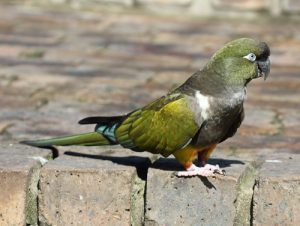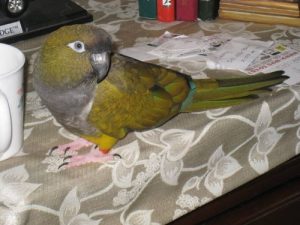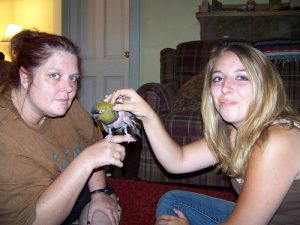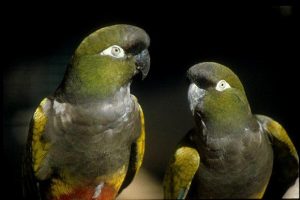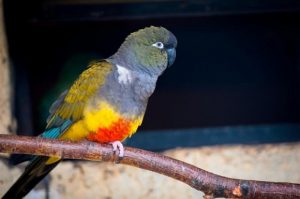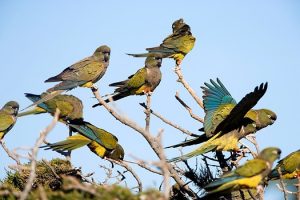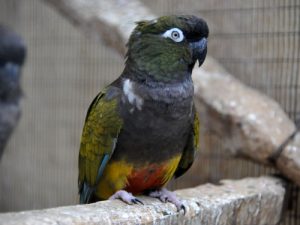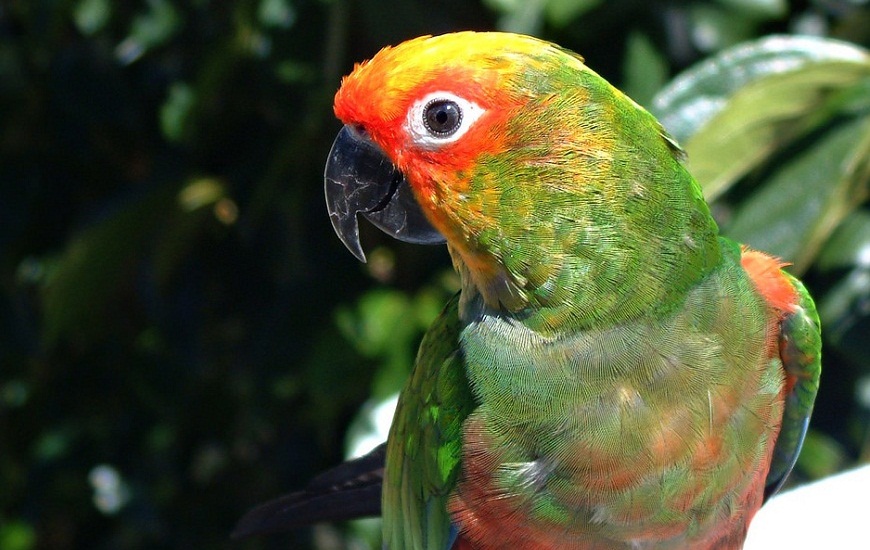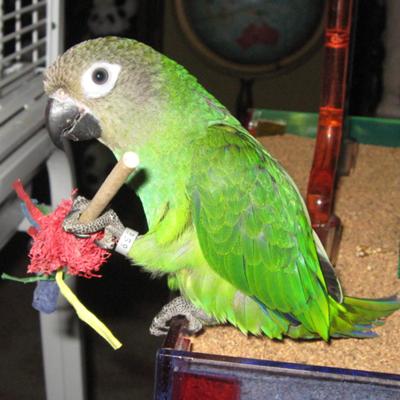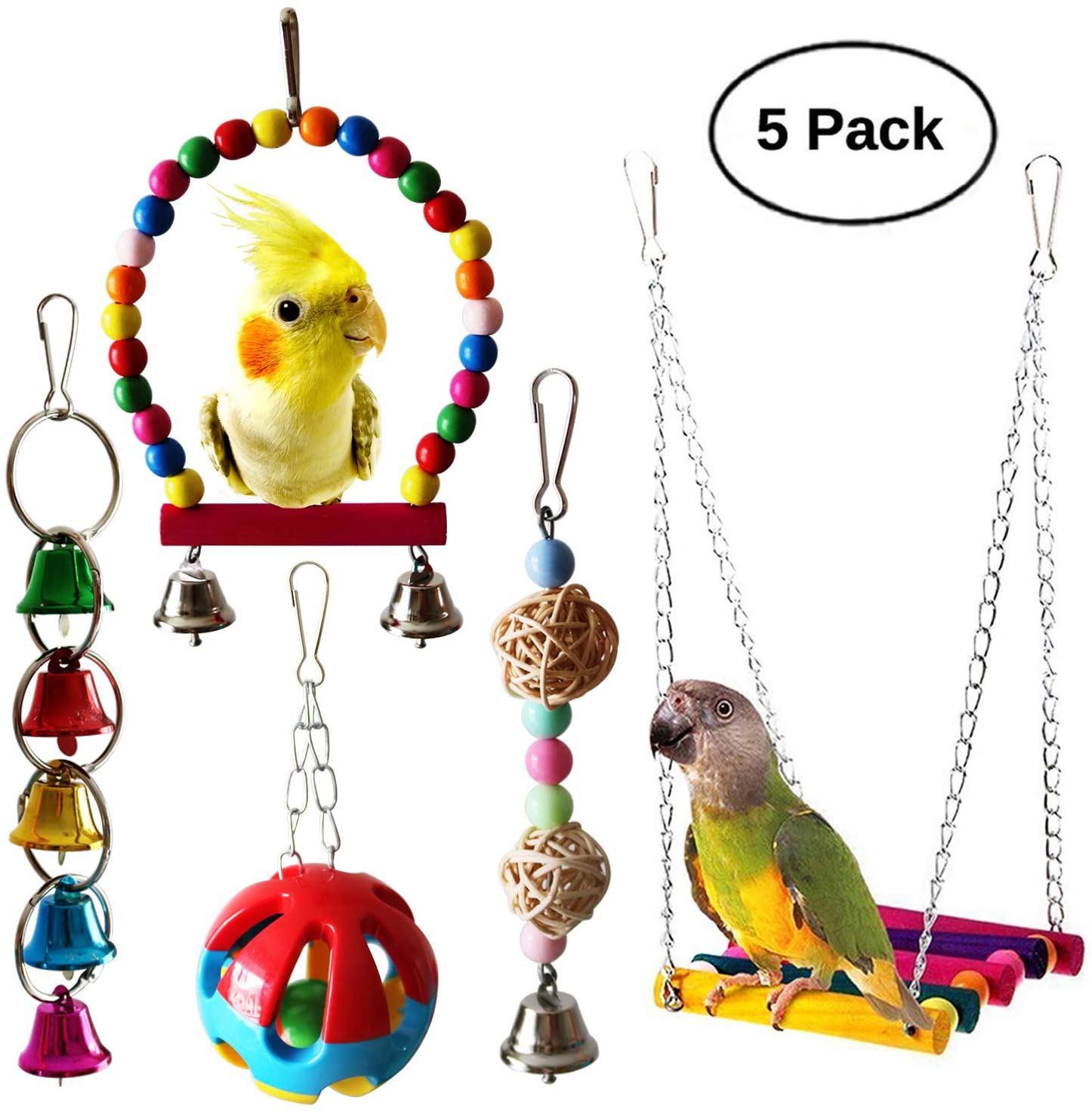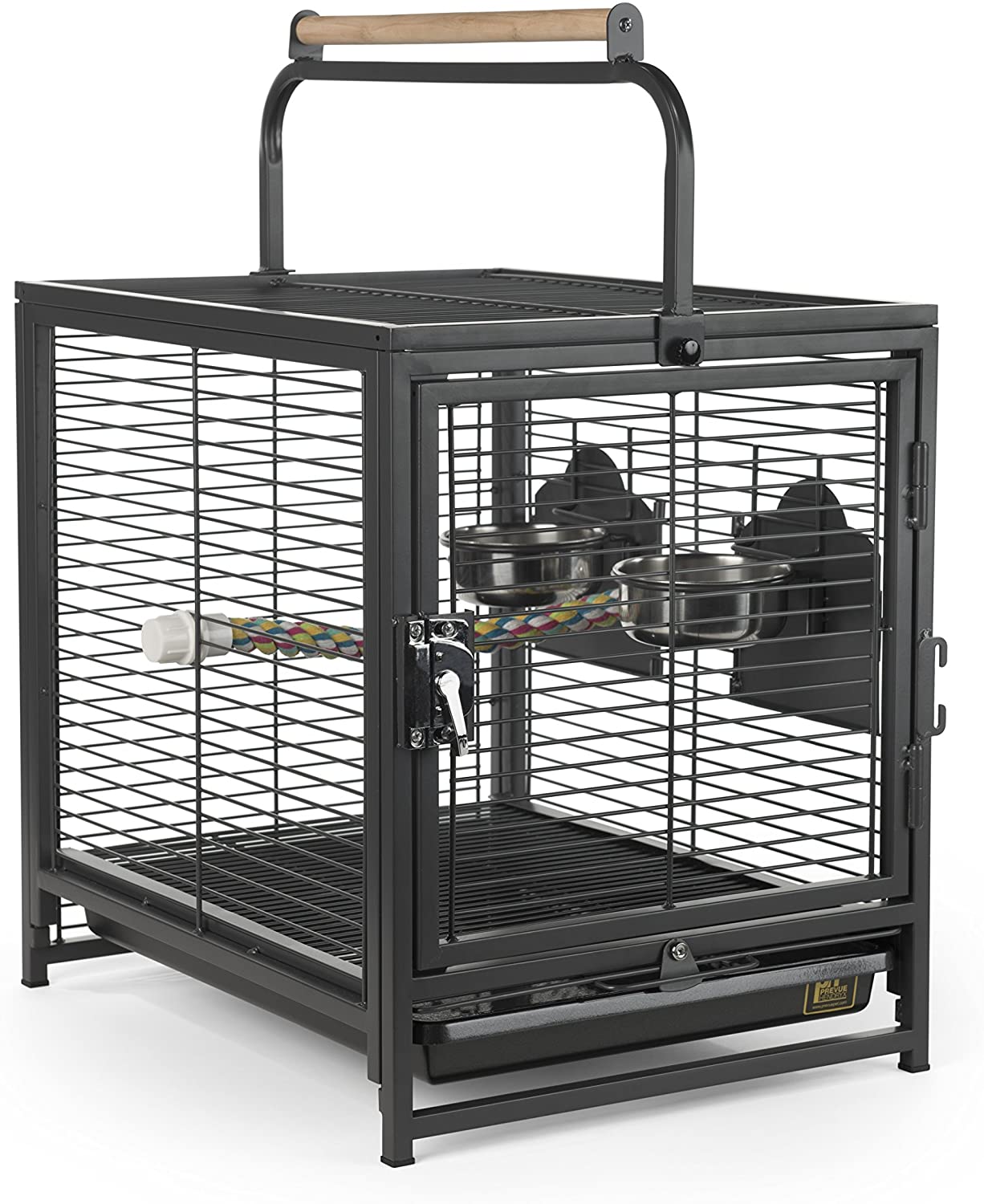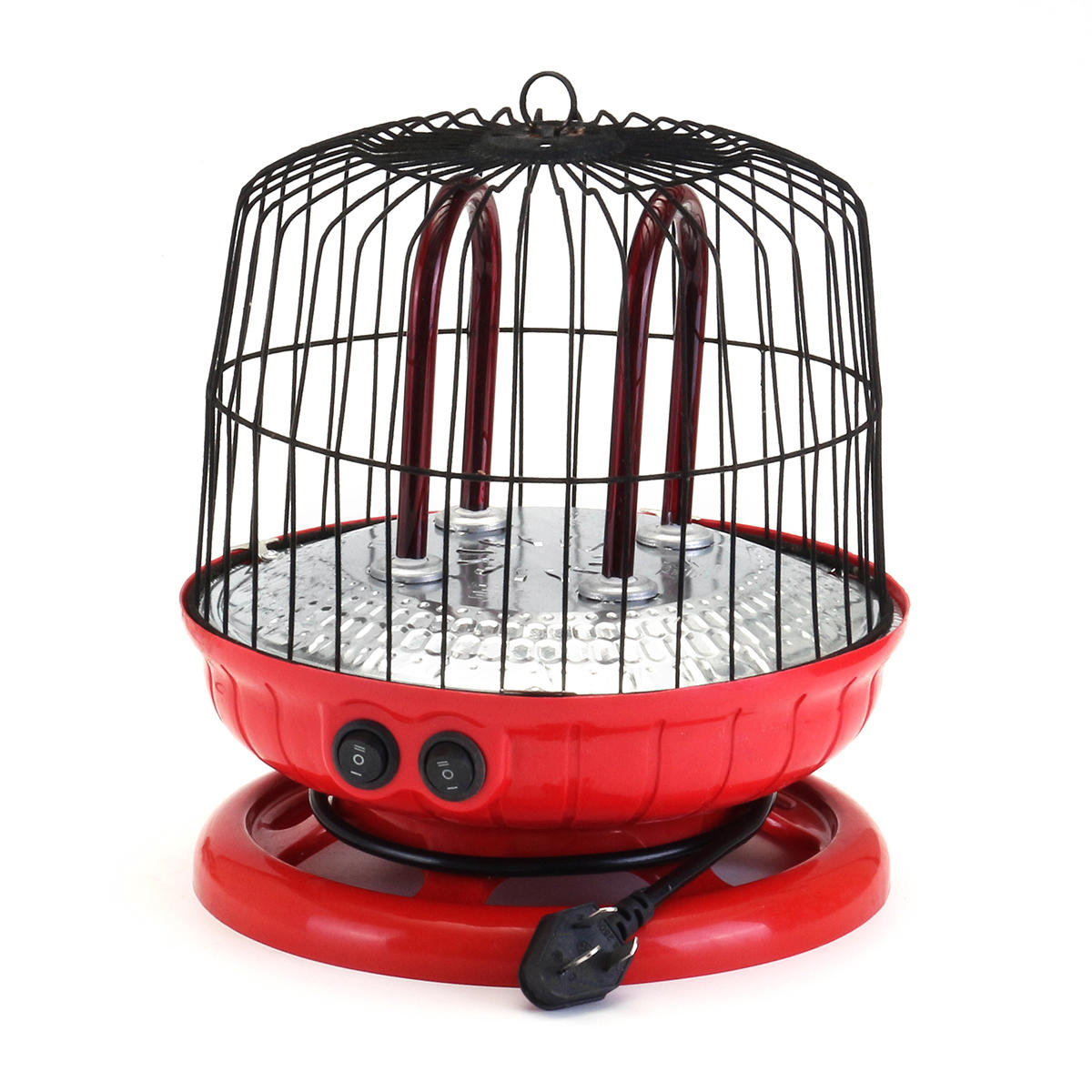Patagonian conures are the gentle giants of the conure world. They have gained popularity as pets in the recent decades because of their disposition. The only thing to consider before you buy a Patagonian conure is whether there is a spare room which you can soundproof as these birds are thunderous when it comes to noise, and you are living in an apartment it will be rather inconsiderate of you towards your neighbors to keep one of these birds.
Quick Information |
|
| Also known as | Burrowing parrot, burrowing parakeet |
| Color | Olive-brown with greenish tinges, yellow with olive tinges, orange-red thighs, and abdomen grayish brown breast throat, and a pair of yellow eyes surrounded by a white eye ring, gray beak, and pink legs |
| Size | 1.5 ft (45 cm) |
| Weight | 9-14 oz (256-390 g) |
| Subspecies |
|
| Distribution | Argentina, Chile, Uruguay and the Falklands Islands |
| Habitat | Dry bush |
| Diet | Fruits, seeds, berries, and vegetables |
| Breeding age | 3½-4 years |
| Clutch size | 3-4 eggs |
| Incubation period | 24-26 days |
| Fledging | 80 days |
| Lifespan | 38-42 years |
| IUCN conservation status | Least Concern |
| Temperament as pets | Social and affectionate |
| Maintenance requirement | Needs continuous interaction |
| Noise | Raucous |
| Talking ability | Low |
As pets
Housing
Get a large cage for your Patagonian conure, or Patty, as they are affectionately called. Place a grate on the floor to ensure that the bird does not play in its excrement. Throw in a good number of toys to maintain mental enrichment. There should be perches inside the cage. Also, remember to let the bird out of the cage for a few hours daily.
Temperature
They can be comfortable in temperatures ranging from 40° to 90° Fahrenheit. Ensure that the cage is not in the way of drafts.
Personality
They are a very sociable bird, and usually get along with all members of a family, as opposed to gelling with just one. Starving them of interaction with their humans makes them rather vicious.
Feeding
Any food with a high nutritious value that you eat, you can offer to your Patty. On a regular basis, you can feed them veggies, pellets, sprouts, and fruits.
Care
The cage needs to be cleaned at least once a week and disinfected once a year. Replace the water and food dishes with fresh ones every day. Trim the wings to make certain that you do not lose your bird through an open window. Trim the beak and the nails if you think they have gotten overgrown.
Health problems
Common illnesses that plague the Patagonian conure are respiratory infections, sinus inflammation, diarrhea, Candidiasis, egg binding, egg pecking, feather plucking, enlargement of the thyroid gland, psittacosis, eye infections, worms, and salmonella. Take your bird to the vet regularly to keep such problems at bay.
Price
They cost around $600.
Interesting Facts
- Patty’s are the largest in the conure family.
- Compared to the size of the body, Patagonian conures have the biggest feet in the parrot family.
Video: Patagonian Conure Dancing
References:
- http://animal-world.com/encyclo/birds/conures/patagonian.php
- https://beautyofbirds.com/patagonian-conure/
- https://www.northernparrots.com/blog/patagonian-conure-fact-sheet/
- https://animal-world.com/encyclo/birds/conures/patagonian.php
- https://www.parrots.org/encyclopedia/patagonian-conure
- https://www.britannica.com/animal/blue-and-yellow-macaw


